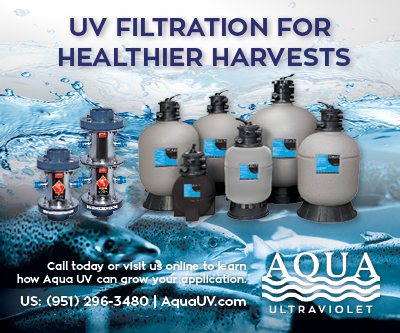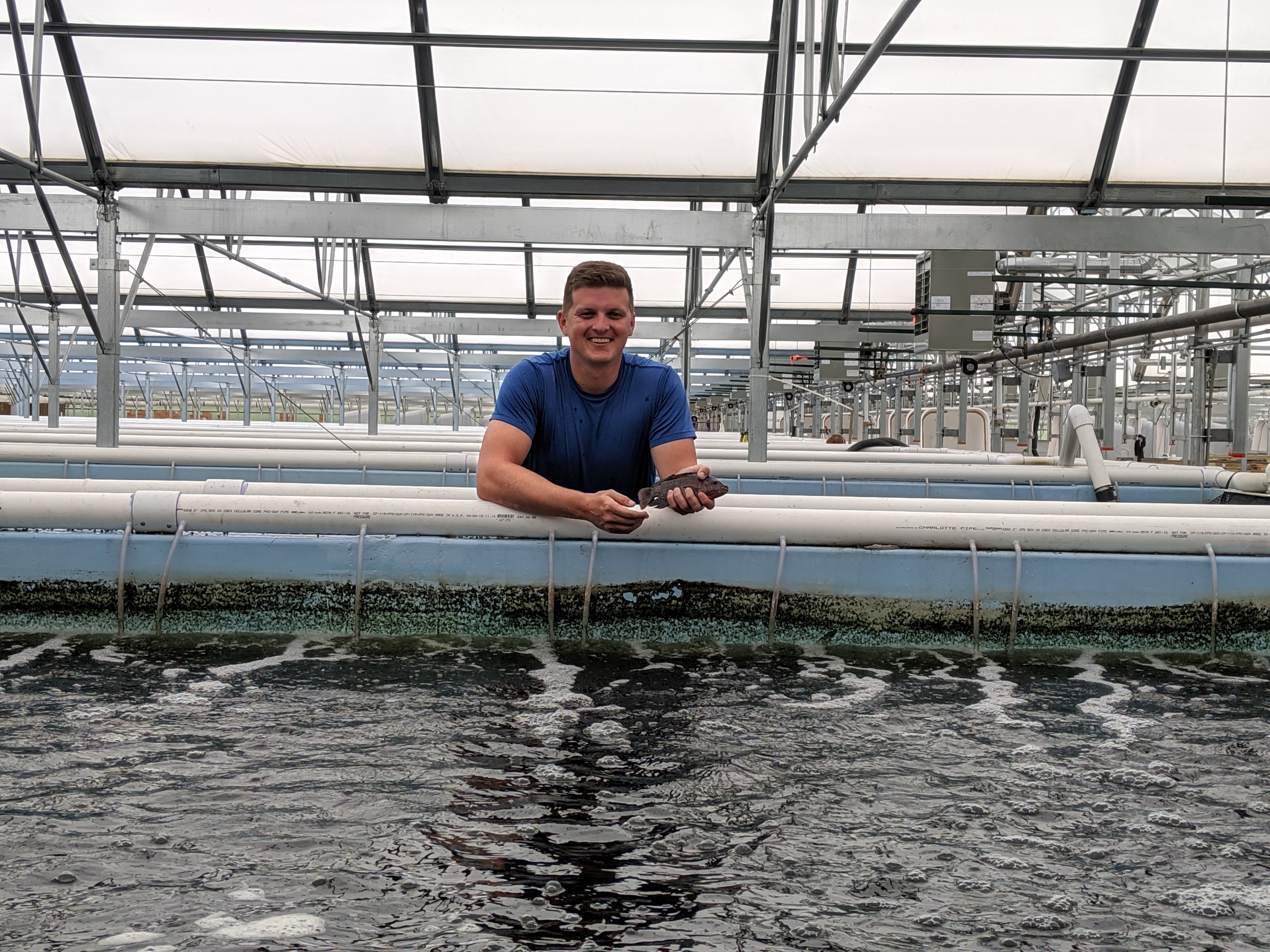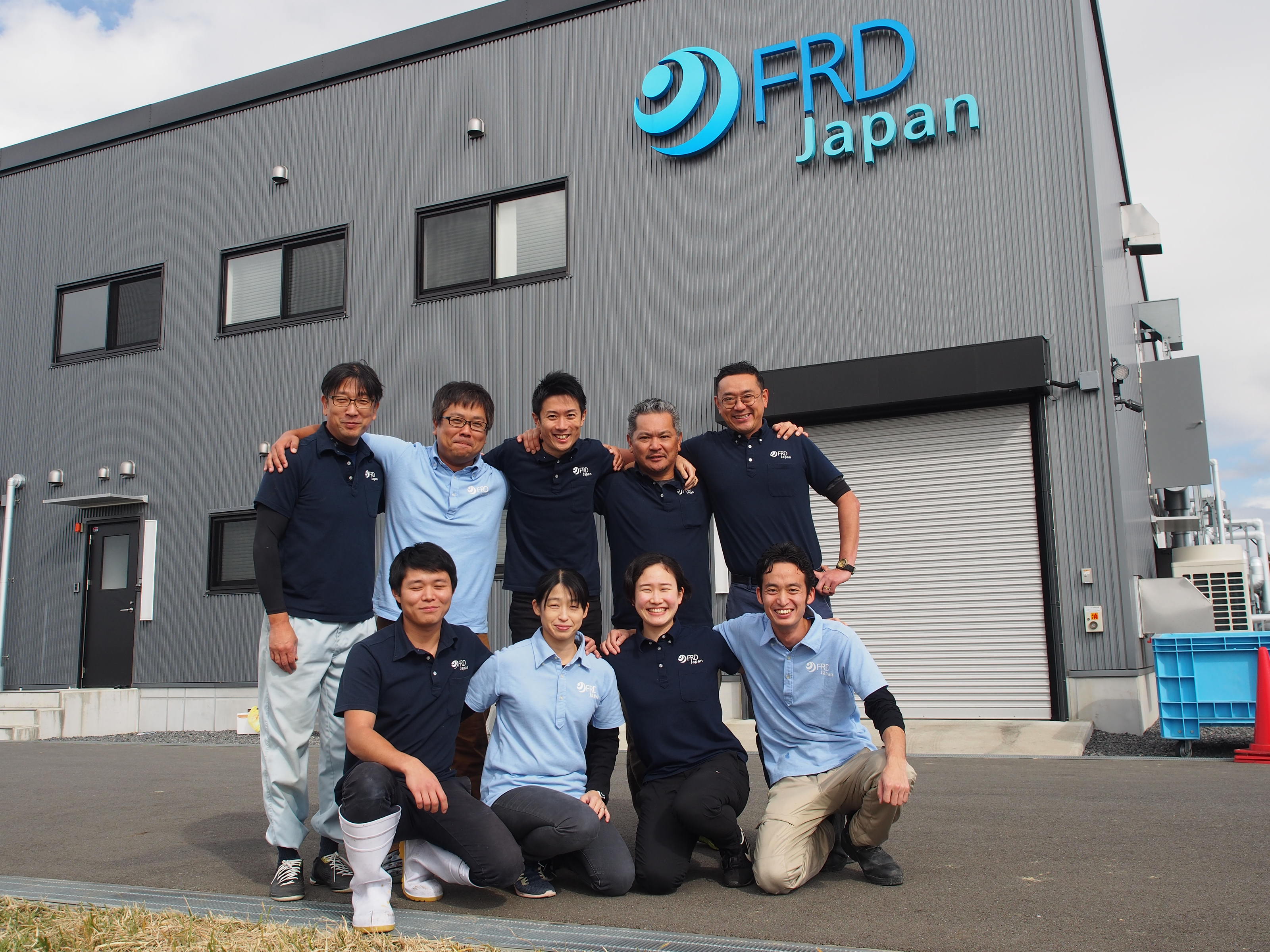| |
| |
 |
| |
 |
|
@{mv_date_MMM d, yyyy}@ |
|
| |
 Women account for 70 percent of the world’s seafood workers but many of them work in entry level, low-paying jobs, and very few are in leadership roles. Is the industry paying enough attention to diversity in the aquaculture industry? Is gender diversity playing a factor into the design of RAS facilities? These questions and more are discussed in this new podcast episode of RAS Talk.
» Read more
Women account for 70 percent of the world’s seafood workers but many of them work in entry level, low-paying jobs, and very few are in leadership roles. Is the industry paying enough attention to diversity in the aquaculture industry? Is gender diversity playing a factor into the design of RAS facilities? These questions and more are discussed in this new podcast episode of RAS Talk.
» Read more
Recirculating aquaculture system company AquaMaof Aquaculture Technologies Ltd., is set to build a new aquaculture facility with a production capacity of 10,000 tons of Atlantic salmon per year.
» Read more
Public concern towards aquaculture practices is apparent but the need to make people aware of the need and benefit of seafood consumption is clear.
» Read more
|
| |
 |
| |
|
| |

The Alltech Coppens RAS philosophy is to maximise nutrient utilisation, minimise nutrient losses for optimal fish growth and filter performance.
To get a great insight into how you can operate and achieve optimal function of a RAS it is crucial to have an understanding of the fundamental requirements.
Find out more on www.alltechcoppens.com/ras-guide |
| |
|
| |
 Twenty-eight-year-old Joe Sweeney comes from a family of farmers. He knows a thing or two about raising cattle, horses, pigs, and growing corn and soybeans. Today, he’s raising a different kind of livestock – tilapia (Oreochromis niloticus) – and he’s doing it in the middle of rural Iowa, in the U.S. Midwest.
» Read more
Twenty-eight-year-old Joe Sweeney comes from a family of farmers. He knows a thing or two about raising cattle, horses, pigs, and growing corn and soybeans. Today, he’s raising a different kind of livestock – tilapia (Oreochromis niloticus) – and he’s doing it in the middle of rural Iowa, in the U.S. Midwest.
» Read more |
| |
 Japan’s commercial salmon market is supported by large-volume imports from countries like Norway and Chile, but to capitalize on the popularity of salmon, regions in Japan have been vying to produce the species themselves. Now, these efforts are beginning to bear fruit with new RAS projects across the country.
» Read more
Japan’s commercial salmon market is supported by large-volume imports from countries like Norway and Chile, but to capitalize on the popularity of salmon, regions in Japan have been vying to produce the species themselves. Now, these efforts are beginning to bear fruit with new RAS projects across the country.
» Read more |
| |
 |
| |
|
| |
Japanese business giant Marubeni Corp. has partnered with marine products firm Nissui Europe, a wholly owned subsidiary of Nippon Suisan Kaisha, to take over the recirculating aquaculture system (RAS) operations of Danish Salmon A/S.
» Read more
|
Aqua feed company BioMar Group has joined forces with one of Vietnam’s leading shrimp hatchery company Viet-UC Seafood Corp.
» Read more
|
In the midst of the continuing COVID-19 crisis, the United States aquaculture industry remains uncertain if it will receive much needed relief from the federal government.
» Read more
|
For humans, switching off the lights is one of the key elements of a goodnight’s sleep – and hopefully a healthy fresh start in the morning. Not so for some fish species it seems, according to the findings of a research carried out by the Southeast Asian Fisheries Development Center/Aquaculture Department.
» Read more
|
|
An ongoing recirculating aquaculture system (RAS) pilot program in Lake Victoria aims not only to optimize the use of the lake’s water for agriculture but also get more women involved in a promising aquaculture sector, according to the European Commission.
» Read more
| | |
|
| |
 Productivity in a recirculating aquaculture system (RAS) is far superior to traditional farming methods. The profitability of RAS depends on the productivity (kg/m3/year) of the system and, therefore, RAS requires a high stocking density and growth rate. A well-designed system, the right feed, good management practices and an optimal feeding strategy are fundamental to the success of both your fish and your farm.
» Learn more
Productivity in a recirculating aquaculture system (RAS) is far superior to traditional farming methods. The profitability of RAS depends on the productivity (kg/m3/year) of the system and, therefore, RAS requires a high stocking density and growth rate. A well-designed system, the right feed, good management practices and an optimal feeding strategy are fundamental to the success of both your fish and your farm.
» Learn more |
| |
|
| |
|
|
| |
| |








